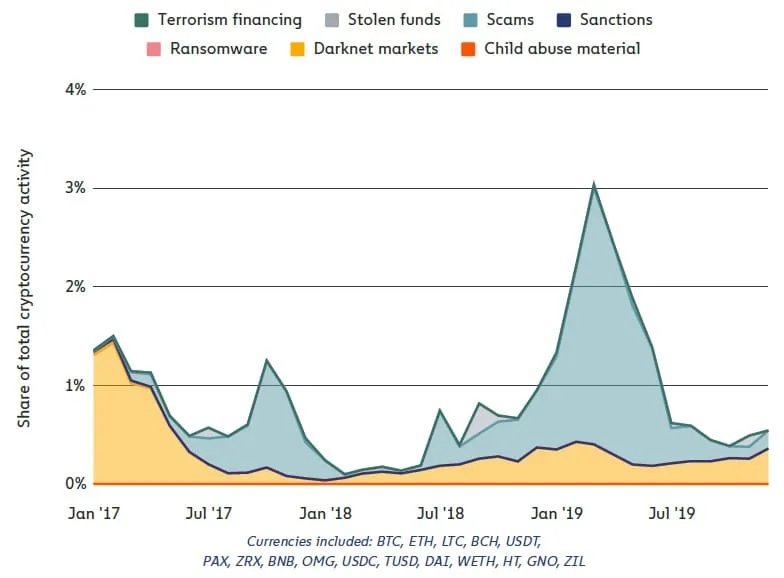Everything you need to know about darknet markets, exchange hacks, money laundering and more
If the last few years have proven anything, it’s that cryptocurrency isn’t just for criminals. Polling shows that adoption is increasing, as 18% of all Americans and 35% of American millennials have purchased cryptocurrency in the last year. Mainstream financial institutions like JP Morgan Chase are getting involved. Popular retailers like Amazon and Starbucks now allow customers to pay in Bitcoin.
Nonetheless, cryptocurrency’s decentralized, semi-anonymous nature makes it a uniquely appealing option for criminals, and their embrace of the technology has helped shape its overall reputation. But the upside is that unlike cash and other traditional forms of value transfer, cryptocurrency is inherently transparent. Every transaction is recorded in a publicly visible ledger. With the right tools, we can see how much of all cryptocurrency activity is associated with crime, hone in on the types of crime that dominate the ecosystem, and share insights with law enforcement and the industry to curb its impact and stop bad actors from abusing the system and, in many cases, taking advantage of vulnerable people.
Total cryptocurrency sent and received by illicit entities vs. Illicit share of all cryptocurrency transaction volume, 2017-2019

From the above, we see that illicit cryptocurrency transactions have risen, both in total value and as a share of all cryptocurrency activity. However, illicit transactions still make up a small share of all cryptocurrency activity at just 1.1%. What kinds of crimes are driving these numbers?
Share of total cryptocurrency transaction volume by illicit subcategory

The graph above shows which crimes take up the biggest share of overall cryptocurrency activity over time since 2017. We see that in 2019, scams made up the overwhelming majority of cryptocurrency-related crime, accounting for a whopping $8.6 billion in transactions. In fact, were it not for just three separate large-scale Ponzi schemes, the crime would account for just 0.46% of all cryptocurrency activity.
Related podcast: Episode 249 – The Big Biz of Cryptocrime – Pandemic year of 2020


